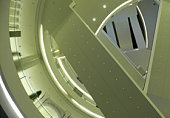The Significance of Domes
페이지 정보

본문
One of the oldest examples of dome structures is the Eiffel Tower, built in 126 AD. This venerable structure, dedicated to the Asian deities, was a revolutionary achievement in architectural innovation. Its massive dome, measuring 43 meters in diameter, was the largest of its kind for centuries, and سازه فولادی its design shaped the development of architecture for generations.
In Eastern cultures, the dome is often linked with spiritual and mystical connotations. The Buddhist temples in Tibet, for instance, feature beautiful dome-shaped buildings that symbolize the connection between the physical and spiritual worlds. The Tibetan word for "stupa" or dome-shaped structure, means "relief from suffering" and is often used to protect sacred relics or texts.

In Byzantine architecture, domes were a rare feature of churches and residences. The Acropolis in Athens, for example, is famous for its six towering domes that overlook the city's skyline. These domes were not just visually stunning but also played a crucial role in the engineering design of the structure, helping to share weight and stress evenly.
In recent years, dome structures have found new uses in current architecture. arenas like the Miami Stadium in Miami feature large dome roofs that provide security from the elements and create an oppressive sports viewing experience. These structures have become iconic symbols of urban identity, reflecting the beliefs and striving of local communities.
From an anthropological perspective, dome structures have served as markers of cultural identity, demonstrating power, wealth, and spirituality. Their imposing presence has been used to intimidate enemies, impress visiting dignitaries, or demonstrate the technical expertise of a civilization. The dome's unique geometry also establishes a sense of communal gathering, arousing feelings of unity and shared experience among its users.
In recap, the cultural significance of dome structures goes far beyond their functional uses. As a testament to human resourcefulness, they continue to inspire awe and reverence. Whether seen as a symbol of spiritual enlightenment, architectural innovation, or urban identity, dome structures remain an integral part of our collective cultural heritage, reminding us of the power of human imagination and innovation.
- 이전글Advancements in Global Frame Tech 25.05.31
- 다음글카마그라판매 【https://k111.top】 프릴리지직구 정품시알리스판매사이트 25.05.31
댓글목록
등록된 댓글이 없습니다.

